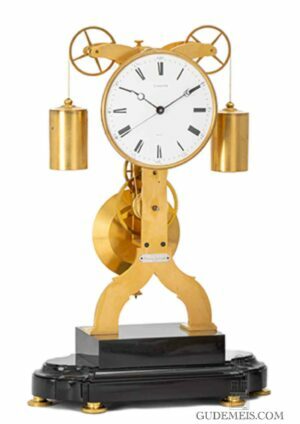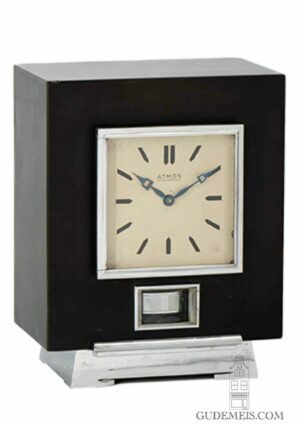A large English Neo Gothic brass quarter chiming skeleton clock, circa 1850.
Description
The chapter ring
The 25-cm silvered and engraved brass chapter ring consists of connecting shaped and pierced cartouches with Roman numerals. The hands are made of blued steel.
The movement
The movement is driven by three spring barrels with fusees and chains. It has a duration of eight days. It is regulated by anchor escapement in combination with a pendulum. The clock has so-called ‘quarter chiming’. This means that a short melody is played each quarter which gets longer with each subsequent quarter. At the hour, it first plays the four quarters and then strikes the number of hours on a bell by means of rack striking.
The case
The architectural frame is shaped as a Gothic church with two towers including stylized cross flowers and a cross above the chapter ring. The ten bells and pinned cylinder are suspended between the two towers. The back of the frame has extra ornament. It is placed on a stepped base which is mounted on a moulded white marble plinth on brass feet.
Smith & Sons
Although the clock isn’t actually signed, it can be attributed to the firm of J. Smith & Sons from Clerkenwell London. Especially the execution of the chapter ring is typical for this firm which was also known for their skeleton clocks shaped as churches.



















